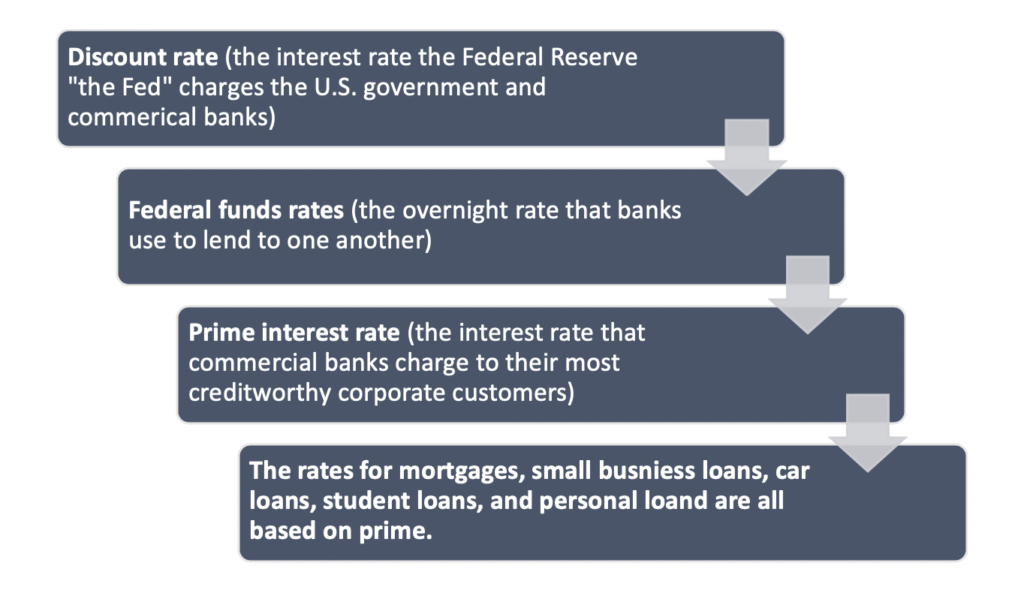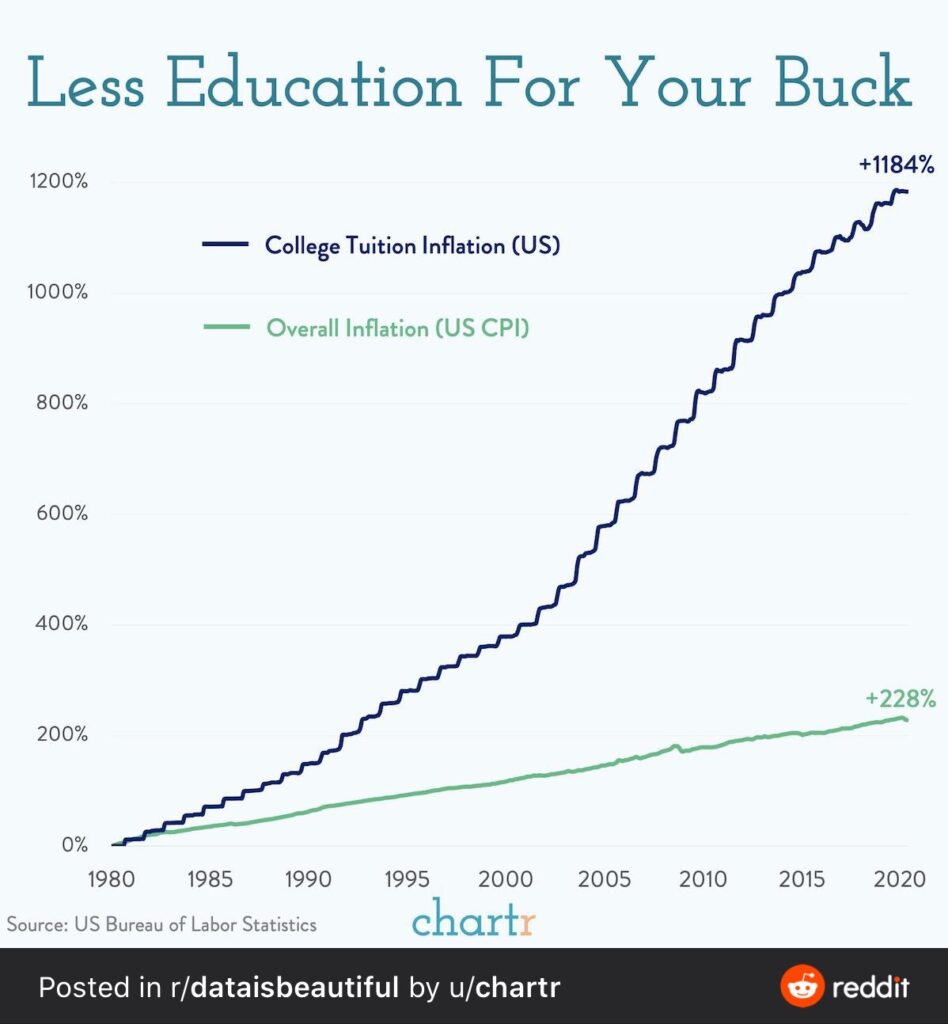By: Pamela Martinez, JBS Corp.
Many of the articles we’ve shared mention investing as a means of building wealth. Before we release you into the world of investments and the stock market, we want to assure that you are equipped with what investment guru Warren Buffet considers the key concepts every investor should know: Interest Rates, Inflation, and Bonds.
Interest Rates
Interest is the price of money, which I know, sounds like a strange phenomenon. How could money have a price? We have to remind ourselves that money is human-made; it did not exist before civilization and was created as a tool to encourage trade. Before the invention of money, we bartered with one another for goods and resources we depended on to survive. The bartering system, although practical, has its flaws. Once civilization got too complicated and communities too large, we needed a better way to trade value amongst one another. This ultimately led to the creation of money, which simultaneously redesigned the concept of debt. The idea of debt is one older than money itself. It is the simple promise to provide value to someone in the future, based on the amount provided to you in the present. If you were a farmer who had milk to barter for but did not necessarily need any goods at the moment, you could tell the baker to provide you fresh loaves of bread the following week in exchange for milk today, which created a debt owed to you by the baker. As the concept of money evolved, so did the idea of debt, and if you were going to risk giving away value today in exchange for profit in the future, you wanted to be sure you were well compensated in the transaction. Enter interest.
In layman’s term interest is the additional money charged to the borrower (you), which the lender can then book as profit for the risk of lending you their money. For example, if you borrow $1,000 from the bank at a simple interest rate of 10%, the total amount you’ll have to repay is $1,100. This amount will continue to increase if you choose to only make the minimum payment on your account. For the most part, banks operate using compounded interest, and interest is calculated daily or monthly from your outstanding balance. As your balance falls, so does your rate… but if you were to only pay the minimum on outstanding debts and your balance increases, so does your total interest paid.
Essentially, there is a hierarchy of interest rates. In the United States, it goes a little something like:

Interest rates are necessary to understand, as they create the foundation of all investment principles, and influence the stimulation of the global economy. If you do not understand interest and how it works, it will be challenging for you to ever understand investments at any level.
Inflation
Another key term to understand before you begin investing is inflation. Inflation is the rate at which the average price of goods and services in the economy increases over the years. The simplest example being the price of bread; in the 1920s, a loaf of bread cost approximately 10¢, today, on average, a loaf of bread will cost $4. Inflation impacts more than the price of food; the price of housing, healthcare, transportation, energy, and other goods and services rise due to inflation. One sector that expressed inflation at a catastrophic rate is college tuition, as seen on the chart below:

Inflation lessens the value of money over time. Consequently, there’s an ongoing debate on whether inflation is good or bad. If you do not understand macroeconomics, do not have tangible assets like property or stocks, and hold most of your wealth in saving deposits, you are likely not a big fan of inflation. This is because inflation generally raises the value of these tangible assets, while simultaneously decreasing the value of cash and saving deposits. Thus, you often hear the infamous quote from Rich Dad Poor Dad’s Robert Kiyosaki, “Savers are Losers.”
The reality is that we need inflation. At an optimum level, inflation promotes spending, which in turn drives innovation and continues to improve the daily lives of billions of individuals on Earth. Without inflation, it would not be easy to maintain capital markets and drive competitive advantage, which generally offers better and more affordable goods and services relative to the wealth of a nation. It is a short-term price to pay for the long-term benefit of a stable, innovative economy.
One great example of the benefits of our current monetary system can be seen in our situation dealing with the economic effects of Covid-19. With the gov’t and central bank (the Fed) creating trillions of dollars in economic stimulus, we avoided a worldwide catastrophe. Millions would have lost their jobs, homes, and the ability to put food on the table. The new money introduced to the economy will cost us and is likely to introduce inflation like we haven’t seen in decades in the coming years. Still, it is a small price to pay for saving a global economic collapse.
Inflation is simply a side-effect of current monetary policy and is expected to continue. Again, it is another primary concept that, if not fully understood, makes your investment decisions ignorant. One of the reasons to invest in the first place is to combat inflation.
Bonds
The last of the key concepts every investor should know is a bond. The simplest and oldest form of investment, a bond is simply a proof of debt… an “I owe you” if you will. Back to the example of the farmer and the baker’s example, to ensure that the baker remembered the milk that was given to him and the bread that he owed, the farmer may have requested a bond be created; a promise signed by both parties stating that the farmer can go and collect his owed bread the following week. Since the spontaneous creation of bonds, thousands of years ago, bonds have evolved. Today, Bonds are customarily issued by governments or corporations and are considered to be “a fixed income instrument since bonds traditionally paid a fixed interest rate to debtholders.” Meaning that if you were to borrow $100 from the government at a fixed interest rate of 10%, regardless of how long it takes you to repay this amount, your repayment amount will not surpass $110.
To put in perspective just how far back in history bonds go. According to the YaleNews; Yales Beinecke Rare Book & Manuscript Library is home to a Dutch water bond created and issued in 1648 in efforts to finance improvements to a local water system. However, records of bonds in history can be traced back to about 2400 B.C.

Bonds generally offer a “safer” form of investments when compared to other options like stock. Comparatively, the rate of return is established upon purchasing a bond and is not tied to company performance, like the appreciation of a stock price. Bonds are also safer because, in the event of a company’s bankruptcy, they are higher in the order of liquidation. This means that bondholders have to be paid back as part of the company’s debts, long before stockholders are allowed to touch any company assets that are declaring bankruptcy. Because of the safer nature, bonds generally produce a lower return on your investment than stocks, but are highly influenced by the interest rate environment. Therefore, when interest rates are low, bonds are usually not very attractive investments. When rates are high, they can produce handsome returns at a reduced risk relative to other investment instruments.
We encourage you to dive deeper into these concepts and thoroughly understand them before you begin investing on your own. Some might say that an individual who is not of well-versed knowledge in these concepts has no business investing. So, we are here to ensure that everyone has access to the information they need to be equal players in the game of money and would be happy to assist in helping you gain a better understanding of investing.




